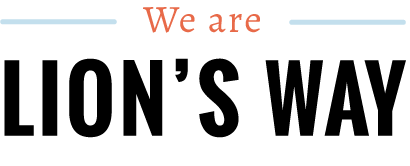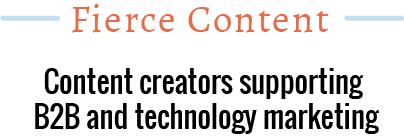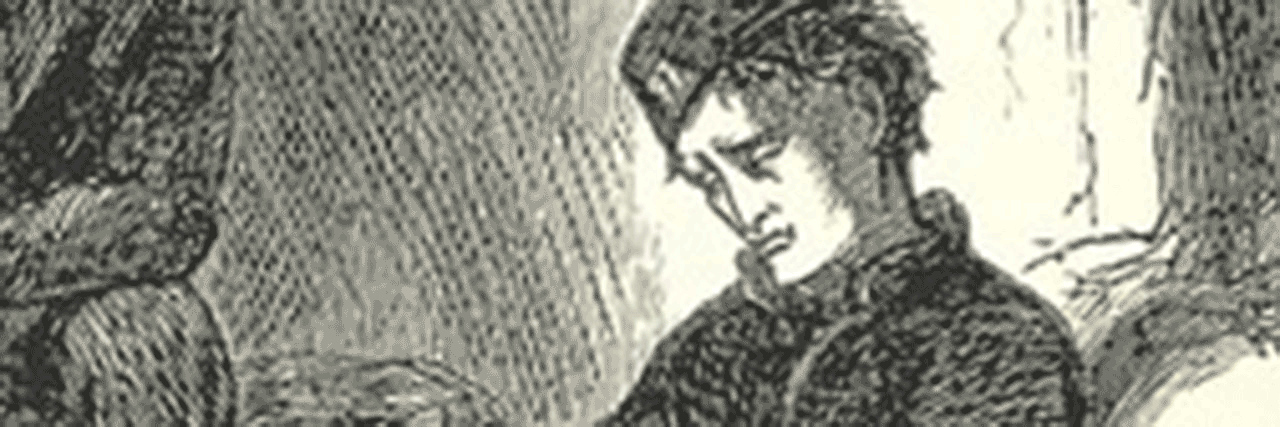Creative Director, looking back from the sophomore row
When it sank in a few years ago that for my company to grow, I was going to need to learn how to let other creatives do the work, I felt confusion, annoyance, and the mad rush of power.
Over a whiskey (I figured that creative directors all drank a lot of whiskey) I asked a creative director that I admired how you let go of the work and allow someone else to do it. He said, “you will never get the quality you want, you will never get what you would make yourself. You just have to have good enough people that they can get you 80% of the way to your vision.”
Added to my feelings of confusion, annoyance, and hunger for power was a tragic slouch. Heavy is the head that wears the crown, I thought. My familial martyrdom glands are going to come in handy for this stretch.
That was several years ago. Just like learning to be a salesperson for my company, I have found that being the creative director is not all confusion, annoyance, power, and martyrdom. In fact, the definition of success in the role could be how rarely you feel these emotions.
A little about me
I hope that this account is useful to others who find themselves in a similar situation as myself. I started on a creative professional path because I strongly identified with my craft. I am a writer and since 2003 I have been lucky enough to earn a living writing. My craft has been a little niche — I focus on technology topics and business-to-business audiences. In 2009, that became my own agency, first named Word Lions and now Lion’s Way.
For a long time, I was earning my keep writing. Directorship crept in slow; at first, I was coordinating with designers. Then I was collecting requirements from clients. Then, I was evaluating the work of other creatives. Then, I was being notably less democratic in meetings, running the show.
It wasn’t until 2016 that I felt comfortable putting the title on my business card. It still looks fake to me. I am not a graduate of Creative Director University. I am not nearly so cool and imposing as someone in this position ought to be.
Defining service
When you are running your own company, your job description can change without you noticing. For many years that left me feeling adrift. I would realize that I was in fact a salesman. I was a manager of people. That I was responsible for budgets. To the teenage critic in my head, all this was very un-rock-and-roll. Definitively not Work That Makes the World a Better Place.”
I learned to define my work by who and how I serve. Creative direction is still soulful service, which is plenty rock and roll and plenty legit creative. It is still communication, it is still empathy. Now, along with ideas that see the light of day, my production is systems and pre-creation effort that allows other creatives to do what they do best.
I serve clients, creatives, and audiences. I do whatever it takes to serve them all the best I can. That, in a weirdly aspirational nutshell, is what I think of as creative direction.
Reduce the noise, but first define the signal
One testament to this service is if I am reducing noise from the experience of everyone. On a good day:
- The creative can confidently create, knowing the goal, constraints, and resources;
- The client gets what they want promptly;
- The audience gets value worth the time spent with the content produced.
Discernment
Discernment is a fascinating concept to me, which I define as the ability to identify how to live your values in a moment. The Wikipedia definition is
The ability to obtain sharp perceptions or to judge well.
It is a bit highfalutin of me to take a theological concept to work, but I am not the only creative that cares about values (ahem Mike Monteiro). I am happy to take it out of the realm of theology into the workplace. Presuming I have the competence to complete a task (or have access to the person who can do it), the job of a creative director is to discern just what to do.
As a creative director bringing people into a project, I am discerning what is useful for a creative to know and what is just confusing or upsetting. I am discerning when to tell a client that what they think they want is not what they need. And of course, we are all trying to discern the future audience response.
Service to clients
If you have been working as a professional creative, you already know that you need to give a damn to do anything useful. Being a fan of the product you are promoting makes all the work easier and better. Also, you don’t hate the person in the mirror if you are making something that matters to you.
As a creative director, you are not just responsible for doing that for yourself but also representing the value of the client to the other creatives. I make it a practice to avoid trash-talking clients. There can be problems in the project that require a hefty internal-only venting session, but I try to end the conversation with the underlying value that we can offer to the basic mission we signed on for. This is service to clients and to creatives who, like me, need to feel good about the work the person in the mirror is doing.
I stand for the client, sell the creatives on them in our initial meetings and keep noting the positive experience that they offer.
Service to the audience: speaking truth
Like anything worth doing, it’s not easy to speak the truth. I’m still working on it.
Having difficult conversations is not my strong suit but it is important. The creative director is answerable for the project long after the rest of the tasks are signed off. I need to think about the larger significance of it and do my best to determine if it is worth the money, if it fits the bill. This is service to the audience as well as to the client’s larger business needs.
In most situations, this is a familiar conversation around budget:
We can’t make what you want for what you want to spend.
But sometimes it need to be something more challenging.
Does this project actually benefit your business?
With clients, we are always selling. I don’t feel bad about that. The thing about sales is that it’s not just about bringing in money now, but about establishing long-term trust and value. Speaking truth, I try to tell myself, prioritizes the relationship and our integrity over a single project. Cash flow will come from integrity and relationships, I believe.
Service to creators
I think that the same trust and discernment should drive how I work with creators.
To me, providing service to the creators I work with means giving them confidence. I believe that as a writer the more I know about the subject the more confidently and effectively I write, and I apply that belief to setting creators up for success.
Being told
Write these case studies from this source material
Results in less effective creative output than
The client needs to reflect its success into the market, where they have little presence. We need to get as many simple stories out as possible but their subject matter experts are completely unavailable. The more we can do with this fodder, the better for them.
Give them a reason to use their skills and allow them to use their ability to reason to make creative decisions. Don’t leave them in a vacuum.
Giving the creator a share of the cause is a sanity-inducing alternative to micromanagement.
Expectations
Expectations are the core of the clichéd imperious creative director, right? I should be throwing storyboards at quivering creative teams while yelling, “what is this crap? You have until dawn to make something that makes me chortle, or at least giggle.”
I don’t do that, but I do try to state expectations upfront. This is, of course, easier with people I have worked with for a while. We have been around the block a few times, have forgiven each other for the inevitable fuck up. They know my priorities and preferences.
I recently worked with a new writer. It was interesting to think through what my expectations actually were. He did not do a few things just as I had expected. I had to ask myself if I had ever told him what to do or just assumed he knew. Without written direction, that’s pretty hard to examine and improve upon.
I put a fair amount of those expectations in project descriptions (see below: Systems) but there are other expectations that I don’t state so explicitly. I hope that they are codified in this language that I put into my project description boilerplate:
Be a servant. Be a pro. Be curious.
Like my meditations on discernment, this is bringing a whole lot more to work than many people would expect is necessary. Let me break it down.
- Servants are working in service to something. This is perhaps an “in my image” expectation, but tough! I am The Director and this is My Directive!
- Professionals bring business value. They don’t run up budgets, they speak truth about whether something can (or in fact should) be done. I know that as the creative director there are a lot of details that I have consciously not absorbed. I know that the creators have expertise I don’t. If I missed something, a pro knows to speak up.
- The Curious create innovation and learn what those around them are up to. If the writer is curious about the design and learns what helps make good design, everyone makes better work. If the designer gets curious about the underlying technology, they can make more relevant visual elements. Everyone benefits when someone is able to ask a challenging question from left field. Often these start with, “this might be a stupid question, but…” Is it a truly revolutionary product or just a slightly (hyperbolic) revolutionary product? What were people using before this came about?
Systems
One way I can make creative’s lives easier is by making systems that keep their efforts on the work they are best at. Truth be told, I like thinking about this sort of thing, because it lowers my stress as well.
Errors are embarrassing. They are also inevitable. When we are getting paid a pretty penny for some asset, a missing period or an off-brand image is a massive bummer. I would rather we collectively make it harder for mistakes to get to the client rather than rely on heroic efforts by stressed-out individuals.
At Lion’s Way, good edit and review processes mean that the creators know that they are never alone. It also means they are held accountable for their work (see above: Expectations).
Repeatable process, not a template
I recently had a conversation with an experienced marketer turned university professor, Erik Palmer. It was reassuring to hear him talk about how he finds that offering models versus fill in the blank templates improve the output. It is simply too hard to create a template that reads the future.
I’d like to help students get started on a professional-grade strategic communication plan by giving them an example or template that has been used by real agencies, but that’s a risky road on two dimensions:
- Students might adopt the false understanding that planning is just about how you fill in the template. And its corollary:
- Templates will almost never fully answer the need of any given client’s strategic situation and might close off creative opportunities to form a good strategy, rather than promote them.
Templates are a mid-level solution that prevents variation, but make it clear that all the borders are dotted white lines, not double yellow.
Requirements are a starting point
When I am the writer, I know that I will discover something about the project midway through that can allow me to re-work the project. This is why I write introductions last. When I am assigning work to another creator, I try to offer the definition of success but not too much about how to get there. I really don’t like to give someone an outline or a template. A model or an example, yes. Not a rigid guideline. It turns their brains off.
When I revisit the requirements, I want the creator to have an opportunity to say if any of those requirements are bunk. Requirements are not the absolute definition. They are an assumption.
By creating a slightly open-ended dialog, I can check in early on with the creator and ask
How well are my assumptions about this project working?
That often gets a pretty fruitful (but incisive) conversation going.
Don’t make style mongrels
It is hard to watch someone do work that you are pretty confident you can do better. It is hard to see work done in a different way than you would. I think that my greatest discernment challenge is trying to figure out if a deliverable is bad or just different than I would have done it. Regardless, I really avoid “over-fixing” content that I get or passing half-completed projects to other creatives. Any deliverable I get from a creator is a collection of thousands of decisions. They can quickly be contradicted, undermined, and garbled when someone else jumps in and starts making more decisions.
If anything major needs to be changed (time and budget allowing), I make it a query for the creator, not a task for myself. This makes better work and also makes for accountability.
I still strongly identify as a writer. I got to do that for a living for a long time. Now I have to let others enjoy that. A lot of my work is the unseen, unloved, arcane, and difficult-to-measure work of tuning signal to noise. I really wish that there was a Creative Director University or a Certified Creative Director seal I could get from the Federal Creative Director Certification department of some ways and means office. Then I would be able to say someone else approves of how I do this stuff.
As it is, I am only able to contemplate these airy terms discernment and service.
Job satisfaction
Honestly, job satisfaction is still in beta. I really liked being a heroic writer to the rescue, but that took a lot out of me. Embracing the making of good systems and being able to lead the applause for others’ work feels good. Again, not rock and roll. The teenage critic in my head is rolling his eyes.
But this is the next stage. I am learning to let other people’s value show through, learning to point out how they are contributing.
The next challenge
My ego is, as are many creators’ egos, large and fragile. This is tough work for it. I am placing new criteria before it so that I can be soothed at the end of the day that I did a good job.
I think my next challenge is to expect creators to be better than I could do it, to set up a project so that people can do work that I could never accomplish. I could watch from the wings, a wry, self-important smile on my face as the spotlights grace my team and their magnificent deliverables.
Bonus! Template
When I ask someone to do a project, I use the headers below as a starting point to provide them a project description. If other headers are necessary, I add them in.
I should note that I have been having problems with my beloved creators not reading the entire description. As a result, I put Easter eggs into the project descriptions to keep them honest.
- Expected Time to Complete
- The Task At Hand
- Definition of Success (both for the client and for the client relationship)
- Models
- Resources
- Deliverables
- Length (pages, word count)
- Expectations
- Be a pro, be a servant. Be curious.
- Change Tracking Document
- Audience
Thanks to Matt Lurie (@matt_19904) and Karl Steiner for extremely thoughtful edits. Thanks to Erik Palmer for the conversation to inspire this article.
Main image credit: *British Library Tumblr, CC*



